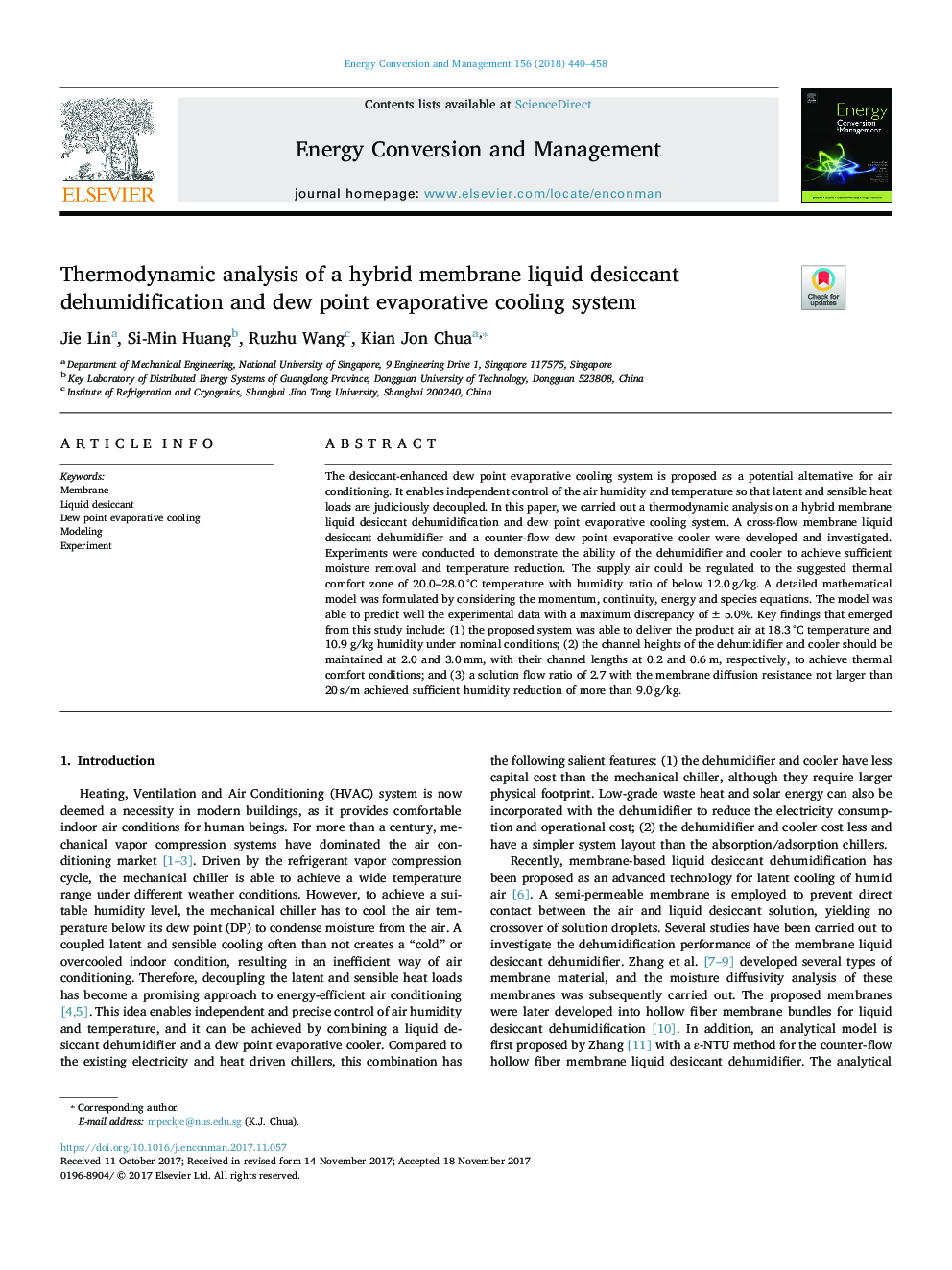| Article ID | Journal | Published Year | Pages | File Type |
|---|---|---|---|---|
| 7159455 | Energy Conversion and Management | 2018 | 19 Pages |
Abstract
The desiccant-enhanced dew point evaporative cooling system is proposed as a potential alternative for air conditioning. It enables independent control of the air humidity and temperature so that latent and sensible heat loads are judiciously decoupled. In this paper, we carried out a thermodynamic analysis on a hybrid membrane liquid desiccant dehumidification and dew point evaporative cooling system. A cross-flow membrane liquid desiccant dehumidifier and a counter-flow dew point evaporative cooler were developed and investigated. Experiments were conducted to demonstrate the ability of the dehumidifier and cooler to achieve sufficient moisture removal and temperature reduction. The supply air could be regulated to the suggested thermal comfort zone of 20.0-28.0â¯Â°C temperature with humidity ratio of below 12.0â¯g/kg. A detailed mathematical model was formulated by considering the momentum, continuity, energy and species equations. The model was able to predict well the experimental data with a maximum discrepancy of ±5.0%. Key findings that emerged from this study include: (1) the proposed system was able to deliver the product air at 18.3â¯Â°C temperature and 10.9â¯g/kg humidity under nominal conditions; (2) the channel heights of the dehumidifier and cooler should be maintained at 2.0 and 3.0â¯mm, with their channel lengths at 0.2 and 0.6â¯m, respectively, to achieve thermal comfort conditions; and (3) a solution flow ratio of 2.7 with the membrane diffusion resistance not larger than 20â¯s/m achieved sufficient humidity reduction of more than 9.0â¯g/kg.
Related Topics
Physical Sciences and Engineering
Energy
Energy (General)
Authors
Jie Lin, Si-Min Huang, Ruzhu Wang, Kian Jon Chua,
